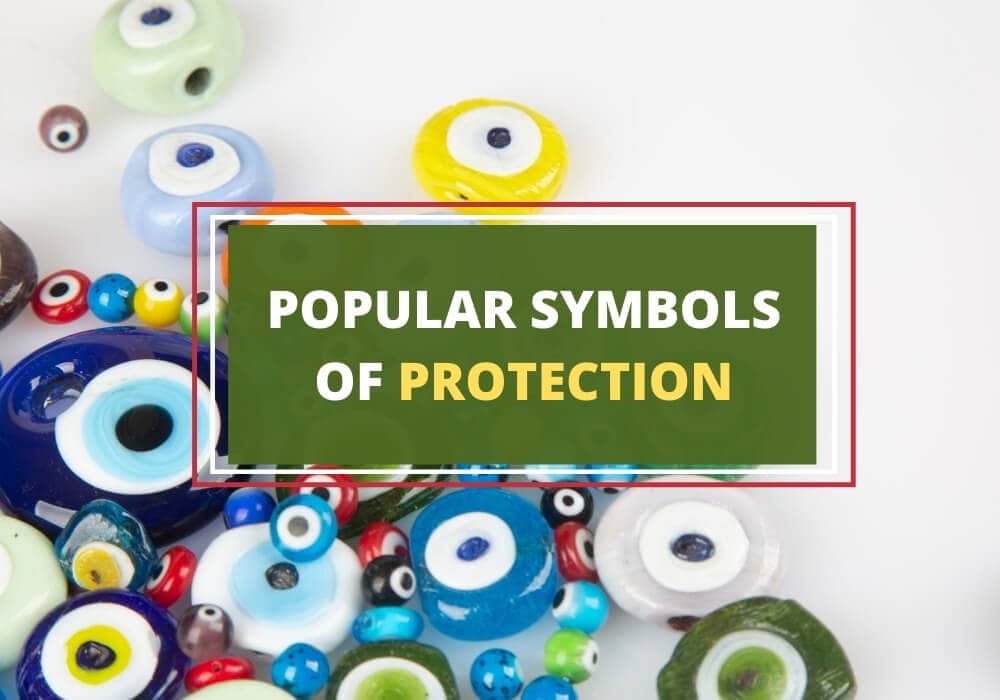
Table of Contents
Since ancient times, humans have turned to symbols for protection against various evils and ills that could befall them. Soldiers carried these into battle, families hung these over their doorways and entrances, and individuals wore them as jewelry to keep the symbol close.
Many of these symbols have made their way into the modern era and are still worn and used as protective symbols. Let’s take a look at popular protection symbols from around the world, which are still used and valued for their symbolic benefits.
1. Eye of Horus
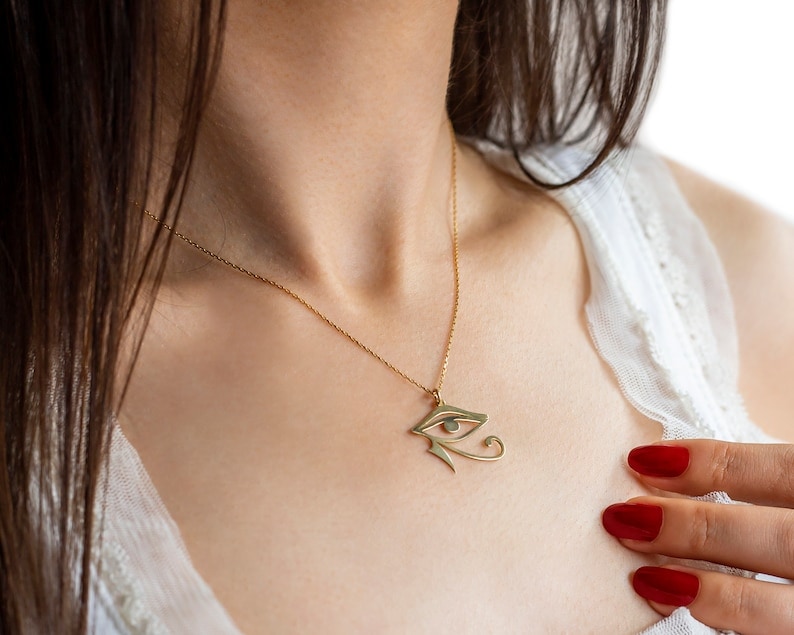
The Eye of Horus (sometimes called Wadjet) is a protective symbol dating back to Ancient Egypt. Horus is the God of the sky in Ancient Egyptian belief who was often depicted as a falcon.
The left eye is the Eye of Horus, and the right is the Eye of Ra and though the two are often confused, each is imbued with a different meaning. The Eye of Horus is believed to bring safety and health, whereas the Eye of Ra is linked to destruction and war.
The Eye of Horus, also known as the All-Seeing Eye, was commonly featured on amulets and artwork in tombs to protect the spirit that it looked down upon. It’s also a powerful amulet to protect the living against evildoers and ill wishes.
It’s believed that the design of the eye features line work and shapes that are linked to sacred geometry and mathematics which adds to its mystic power.
2. Arrow
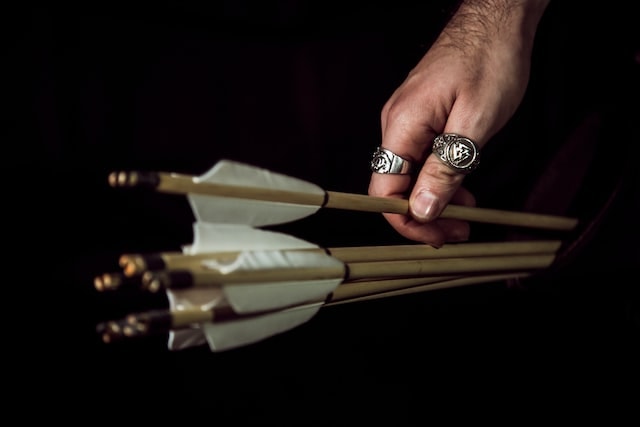
Arrows are a commonly used symbol in many Indigenous American cultures. However, it’s important to note that the specific meaning of the arrow can differ from tribe to tribe.
In general, arrows are used as symbols to depict weapons in illustrated storytelling but are also used to represent protection and defence. An arrow pointing towards the right can symbolize protection and an arrow pointing to the left is used to ward off evil.
Sometimes two arrows are depicted pointing towards each other in a circle. The arrows in this symbol represent closeness and protection enclosed by a circle that represents family. This is commonly used as a symbol to bestow protection on a family.
3. Hamsa Hand
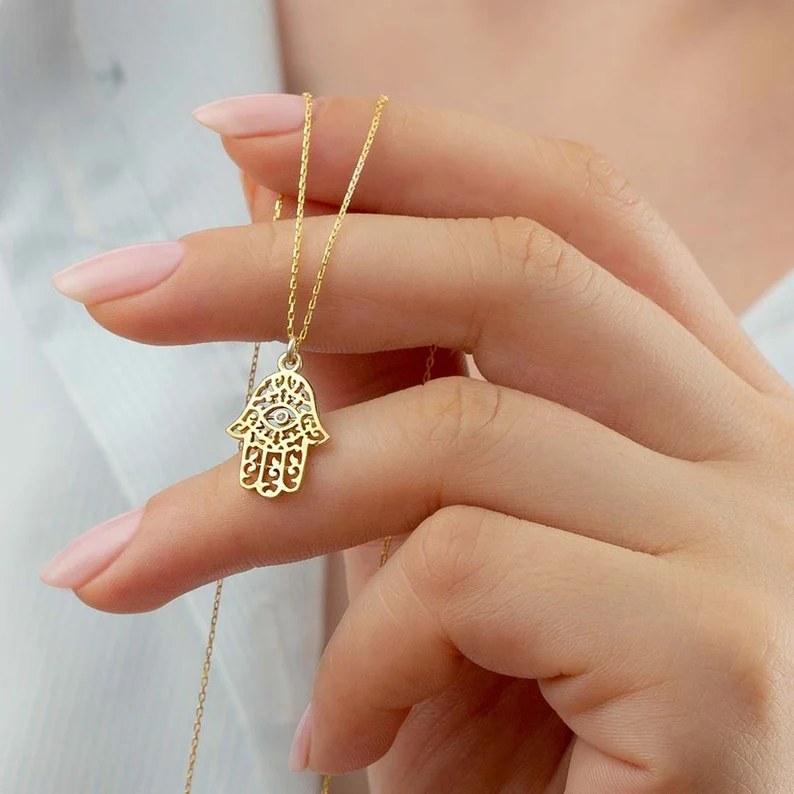
The word Hamsa translates to five in Hebrew, and the symbol is depicted by an open right hand, often with an eye in the center. The Hamsa Hand is used in many cultures as a symbol of protection and is believed to protect the home or wearer from the negative energy of the evil eye.
It’s commonly placed above doorways, in homes, or worn as jewelry. For example, placing a Hamsa Hand in the room of an expectant mother is said to protect the new family from evil spirits. The Hamsa Hand is also a powerful symbol in Buddhist and Hindu spirituality as each of the five fingers connects to an element of the chakra.
From the thumb, each finger connects to fire (solar plexus chakra), air (heart chakra), ethereal (throat chakra), earth (root chakra), and water (sacral chakra). This connection is believed to produce potent protective energy.
4. Mistletoe
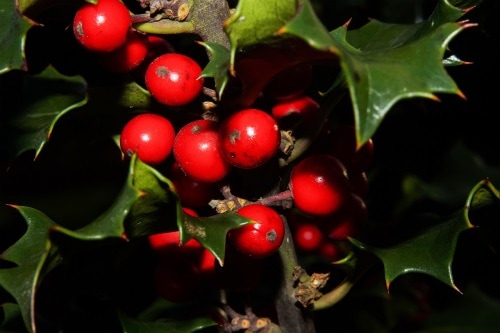
Mistletoe is commonly associated with the Christmas tradition of a kiss when two people stand underneath a sprig. But the plant is also symbolic of protection.
Mistletoe is the common name given to a parasitic shrub commonly found throughout Europe and North America. The Celtic Druids were one of the first cultural groups to ascribe meaning to the plant and used it to cure illness, as an antidote to poison, to bring fertility and to protect against witchcraft.
In Christian folklore, the mistletoe is also symbolic of protection, as well as peace and friendship.
5. Nazar Boncugu
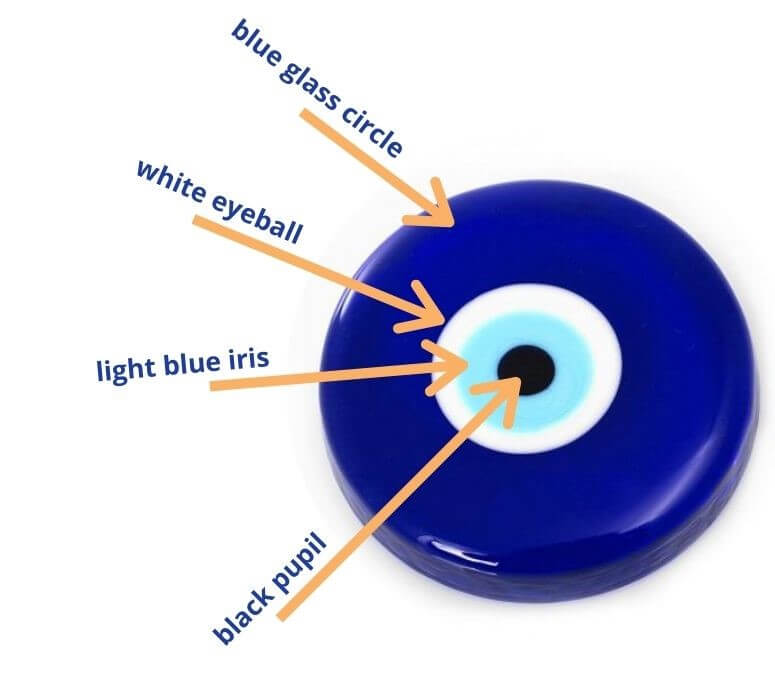
The Arabic word Nazar translates to sight, surveillance, and attention, while the word Boncugu means bead in Turkish. It’s an apt name for the eye-shaped blue and white amulet that is used to protect against the evil eye.
The evil eye is the name given to the destructive energy given off by a spiteful or jealous gaze which is believed to have the power to cause a recipient to fall ill or face misfortune. It can be cast under the guise of a compliment, which is why many use a symbol, such as the Nazar, for protection. It thwarts the evil eye from impacting you.
The Nazar is popular in the form of an amulet or bead that is usually blue and white and is used in jewelry and home décor. They can be found everywhere in Turkey, where the symbol is believed to have originated thousands of years ago.
6. Pentacle
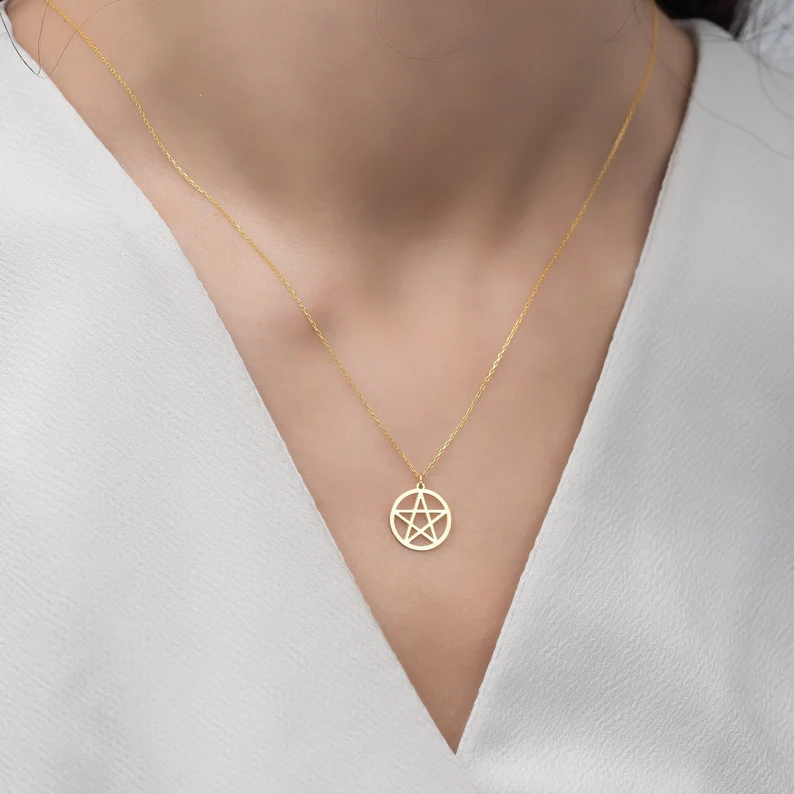
The Pentacle, or Pentagram, is a protective symbol in pagan and Wiccan beliefs. It is depicted as a five-pointed star in a circle.
Each point of the star corresponds to one of the core natural elements – earth, fire, air, water, and spirit, while the encompassing circle represents a protective womb. This is why the symbol is used in rituals to protect against evil spirits.
When worn, the pentacle can symbolize protection for a traveler and a connection to the elements. The pentacle was also traditionally placed over the doorway to protect pagan homes from evil spirits.
7. Celtic Shield Knot
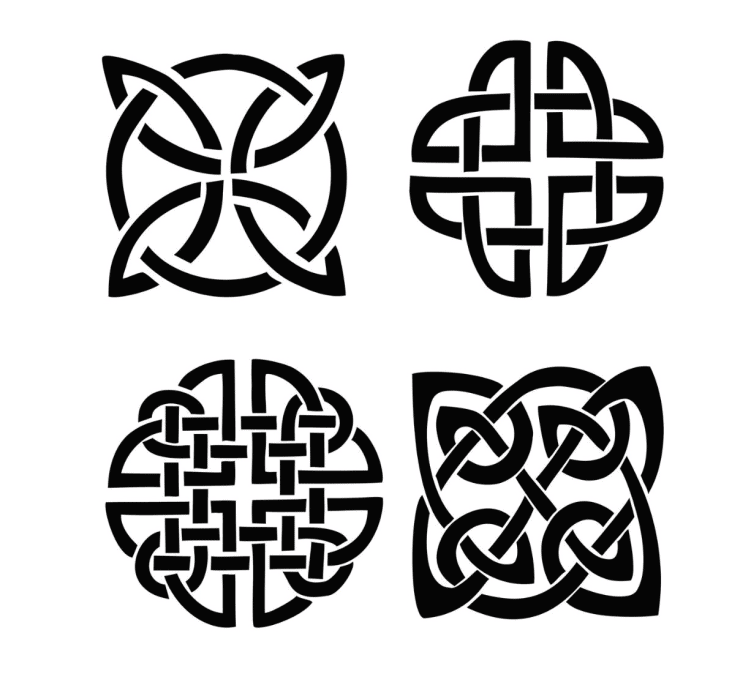
The Celtic Shield Knot is a symbol of protection commonly used in jewelry, décor and as a motif in Celtic design. It’s a stylistic weave that has no beginning or end and the unbroken design is believed to bear the power to ward off negative energy.
Celtic Shield Knots come in several variations and date back thousands of years. They were commonly embossed onto the shields of soldiers, carved into the doorways of important buildings and homes and used to adorn tombstones to protect the spirits of the dead.
8. Mjolnir (Thor’s Hammer)
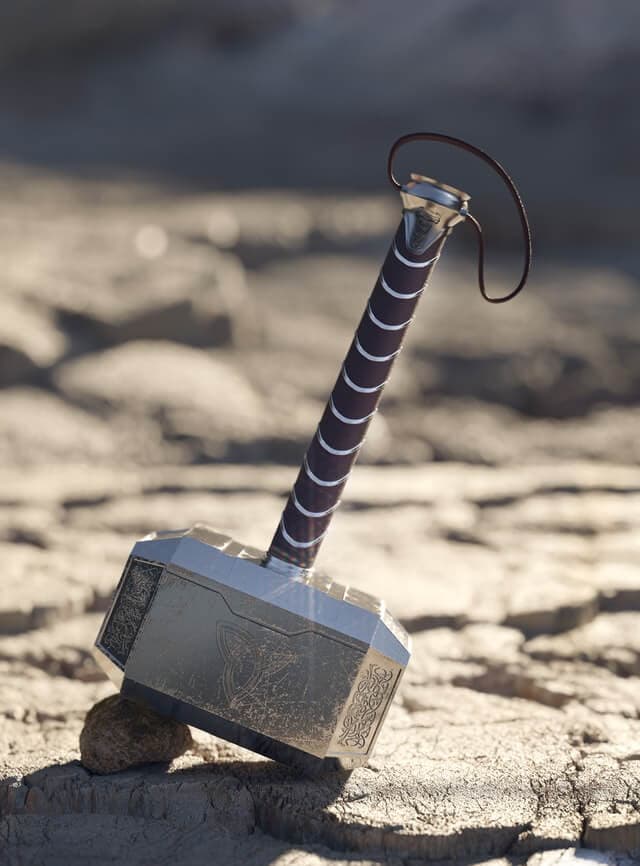
In Norse Mythology, Thor was the God and guardian of Asgard and his hammer was his primary weapon. Thor’s hammer is also known as the Mjolnir and is used as a symbol for blessings and protection.
The symbol was often used as a token during ceremonies to bless significant milestones such as marriages, births, and funerals.
Thor is also associated with lightning and thunder. For this reason, hammers were used to beat drums in ceremonies to simulate thunder. This ritual was believed to bless and protect communities against hostile spirits.
9. Hen’s Leg

The Hen’s Leg, or Akoko Nan, is an Adinkra symbol of protection commonly used in African cultures, particularly those in Ghana and the Ivory Coast.
The symbolic significance of the Hen’s Leg is derived from the African proverb that roughly translates to: The leg of a hen steps on the child chick but does not kill the chick.
The symbol gets its meaning from a hen’s ability to step softly around and around its chicks without hurting them. The Hen’s Leg relates to parental protection that comes from nurturing and disciplining children.
Stylistically, the Akoko Nan is akin to simplistic a Fleur-De-Lis and is commonly used as a print in fabric, as well as an adornment to pottery and metalwork.
10. Tortoise
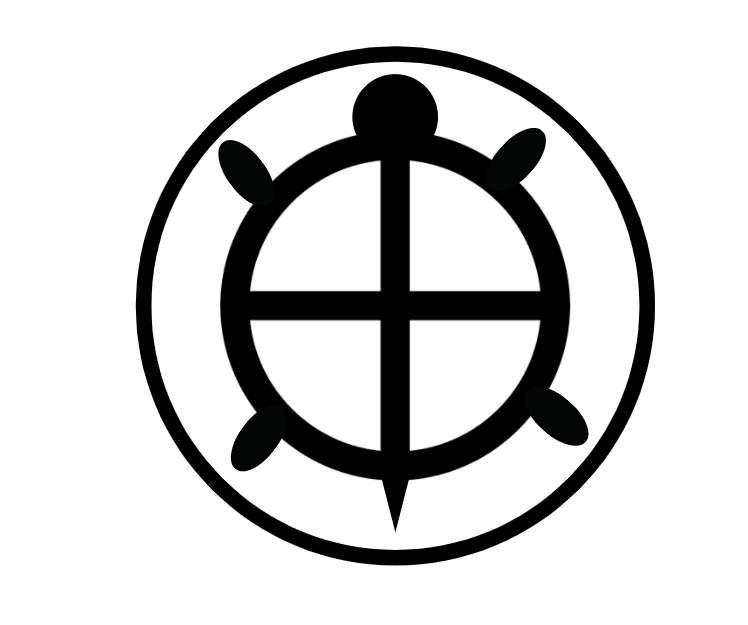
The Sioux are one of the largest North American Indigenous tribes of the plains with traditional lands in modern-day North and South Dakota. In Sioux mythology, the tortoise is believed to carry the world on its back and it also represents life.
It’s also seen as a powerful symbol for protection during birth and for young children as folktales depict the tortoise shepherding new babies into the world.
The Tortoise is commonly seen on textiles and as a decorative motif. It’s usually simplified into a diamond or circle with a cross on its back to represent the patterned shell, with a head and limbs extending from it.
11. Shark Teeth
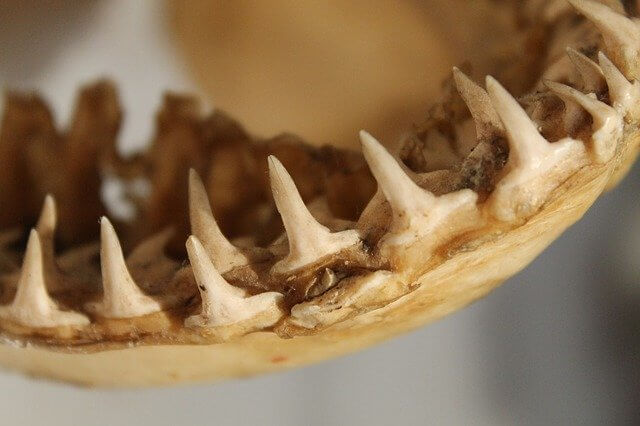
In Polynesian tribes, Etua are a group of potent symbols of significance that are designed to elicit protection from the Gods. Polynesian tribes derive many of their beliefs from the ocean, and sharks, as a top predator are symbolic of strength and power.
For this reason, shark teeth are a common Etua used to bestow protection, strength, and guidance.
Physical shark teeth may be used as tokens in rituals but the symbol is more commonly incorporated in patterns and designs used for prints, carving, and tattoos. In design, shark teeth may be depicted literally in detail, shown within a shark’s jaw, or simplified as a triangle.
12. Bagua Mirror
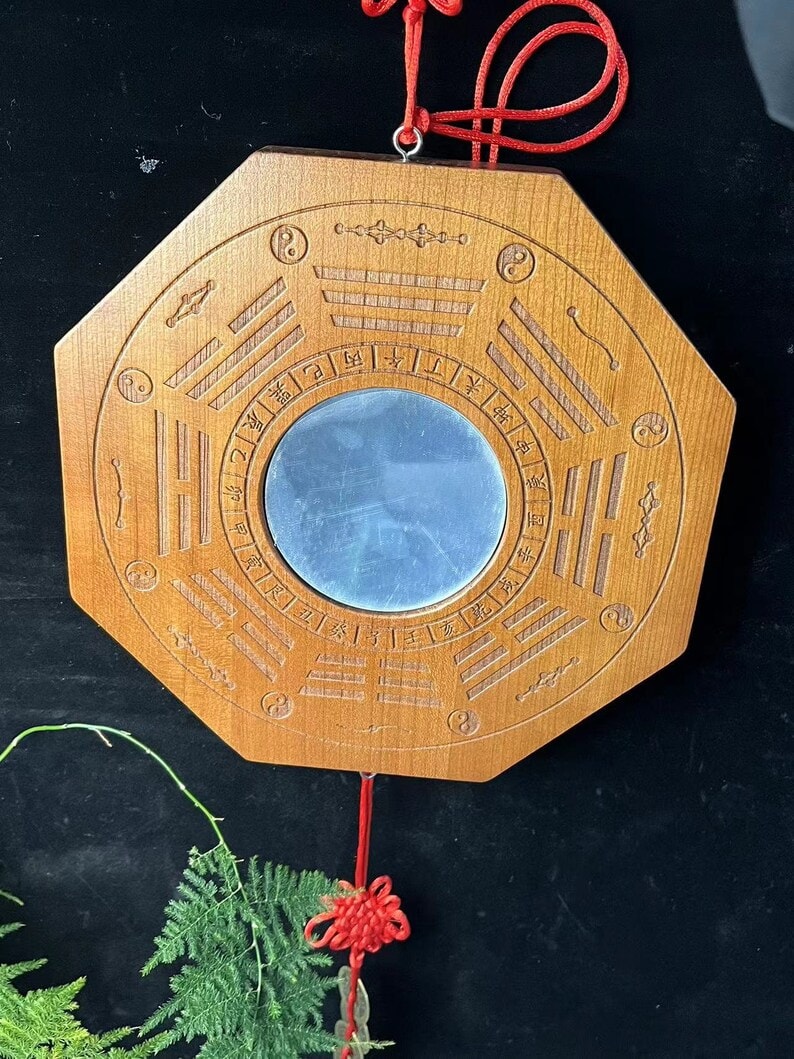
A Bagua Mirror is a small round mirror mounted in an octagonal wooden frame. The Bagua is used in Feng Shui, the practice of harmonizing energy in space through placements and the use of objects. It has origins in ancient Chinese culture but is practiced widely throughout the world today.
In Feng Shui practice, mirrors offer protection to a space and are often referred to as the aspirin of Feng Shui because of their purported healing power. A Bagua Mirror compounds this power with the power of the Bagua frame.
The octagonal frame is most commonly red, green, yellow, and gold. Each of the eight sides of the frame is decorated with three lines (called trigrams). Some of the lines are broken – these are called yin lines – and some are unbroken – these are called yang lines.
If the top of a Bagua mirror features three yang lines (unbroken), the mirror is placed on top of doorways and is used for protection. This is because three unbroken lines are believed to be symbolic of heaven and its protective power.
A protective Bagua mirror is believed to deflect negative energy associated with the corners of a building, power lines, unsightly scenery, and the negative energy of spiritual entities.
If there is a yin line (broken) between two yang lines at the top, the Bagua mirror will symbolize fire and is instead used to define the energy of a space, rather than act as a protective symbol.
13. Cross
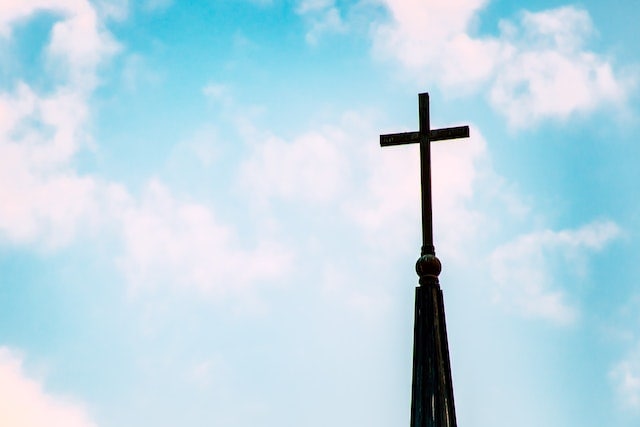
A potent symbol in Christianity, the cross holds many meanings for its believers. But one of these is protection. The cross represents Jesus’ crucifixion, which according to Christian beliefs, occurred because Jesus sacrificed himself for humanity’s sins. This act shields believers from eternal separation from God. When Jesus was resurrected, this signified the triumph over death and evil, further reinforcing the symbolism of the cross as protective.
Over time, Christians began to mark their homes with the sign of the cross to invoke divine protection. Making the sign of the cross is a symbol of faith and protection from various evils. The cross is also a staple object in rituals such as exorcism, where it’s seen as a powerful shield against demons and other evil entities. Overall, the cross continues to be one of the most powerful symbols of protection for Christians.
14. Ankh
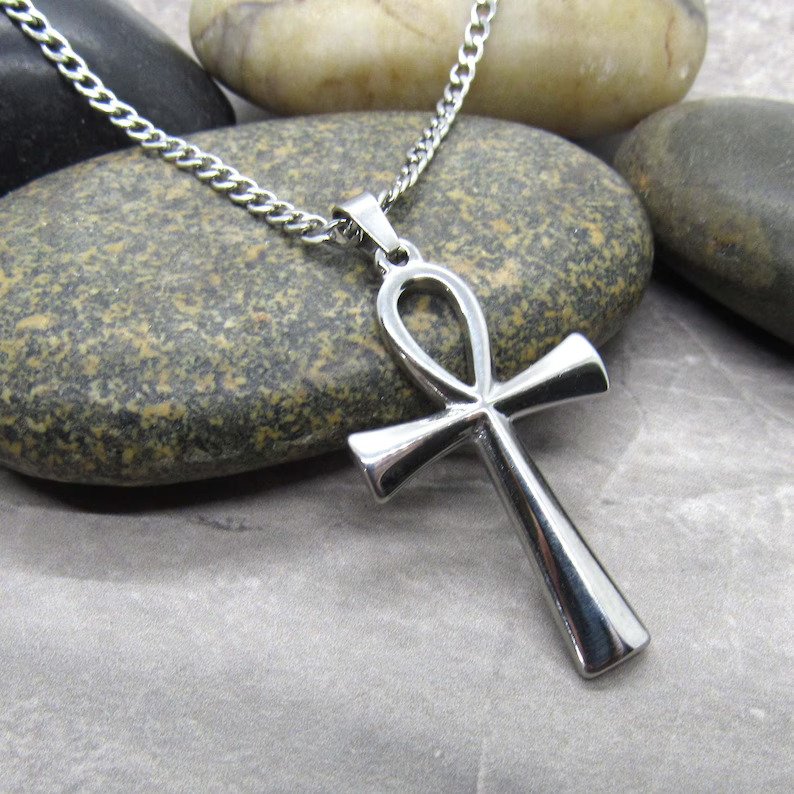
A variation to the cross, but one that’s much older, the Ankh has its roots in ancient Egypt. It’s known as the Key of Life, and was believed to symbolize life, immortality, rebirth, and death. But it’s deeper meanings also extend to protection. In ancient Egyptian art, deities such as Osiris and Isis are depicted holding the Ankh. This highlights the Ankh as a symbol of protection and divinity. Today, the Ankh is used in esoteric and occult practices where it continues to hold this symbolism.
15. Dreamcatcher
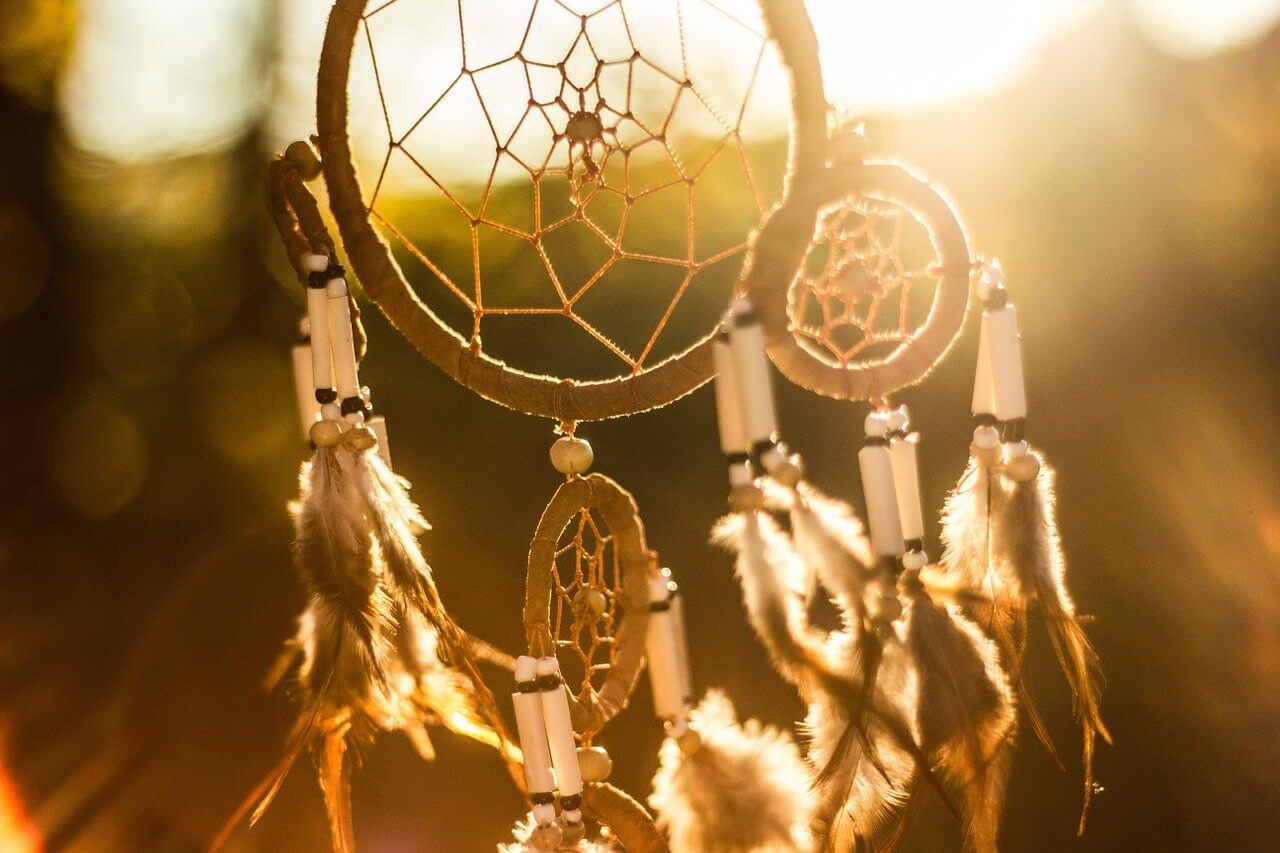
A powerful symbol in Native American beliefs, the dreamcatcher has its roots in the Ojibwe tribe. This handcrafted circular frame with a woven net at its center, adorned with feathers and beads, is a talisman against negative dreams and energies.
According to legend, if you hang a dreamcatcher in your home, it will catch negative dreams that may try to visit you. Only positive dreams will slide down the dangling feathers and embellishments and get to you. The negative dreams will be caught in the web at the center of the dreamcatcher, and will fade away when the sun comes up.
16. Triple Goddess Symbol
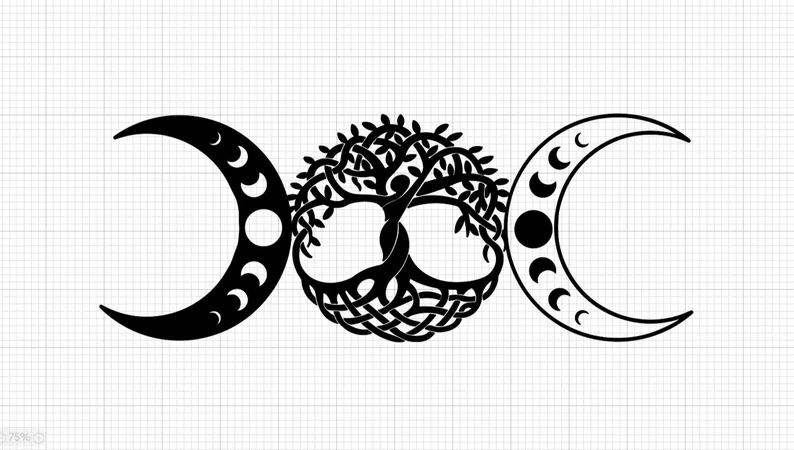
An important symbol in Wiccan and Neopagan beliefs, the Triple Goddess represents the three phases of a woman’s lie – Maiden, Mother, and Crone. Each stage also corresponds to a stage of the moon’s cycle – waxing crescent, full moon, and waning crescent respectively.
Seen as a goddess who aids those who invoke her, the Triple Goddess offers guidance, strength, and protection. This symbol also highlights the fact that we’re not alone, as we all go through these same stages in life.
17. Hecate’s Wheel
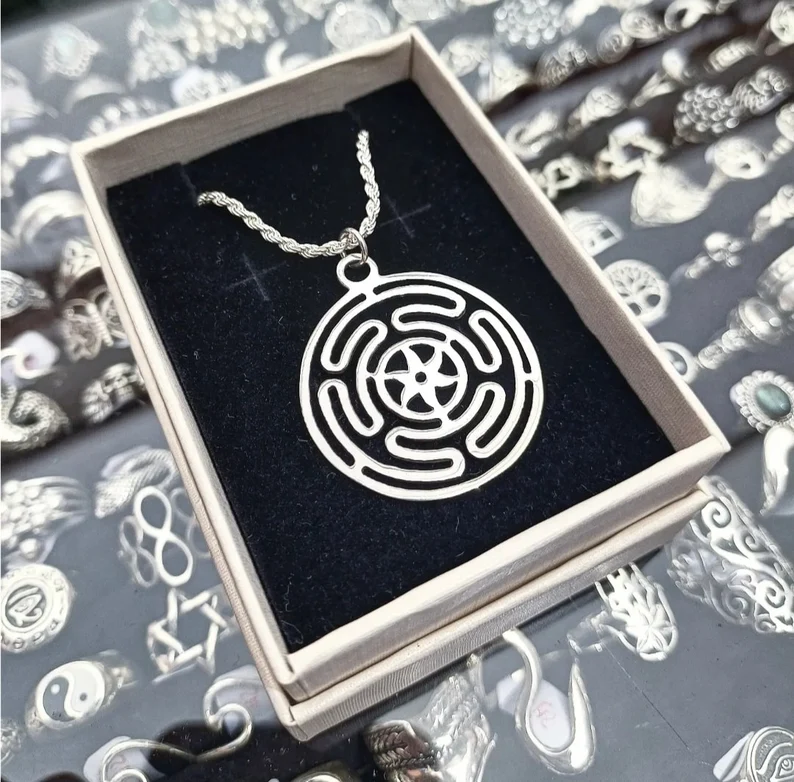
Hecate’s Wheel is associated with the goddess Hecate of Greek mythology. This ancient goddess was associated with crossroads, witchcraft, necromancy, and the moon. This made her an intriguing, powerful, and somewhat dark deity. Her wheel resembles a labyrinth focused around a central point, and is associated with various concepts, including knowledge, cycles of life, and the mysteries of the universe.
So, how is this tied to protection? Well, Hecate is a goddess who protects. She stands at the crossroads, and guards against the unseen and offers protection over liminal spaces. Even today, Hecate’s Wheel is a powerful symbol of protection in occult and esoteric circles.
18. Helm of Awe

This Viking symbol features an eight-spoked figure with three-tipped prongs, radiating from a central figure. It’s one of the Icelandic magical staves, known for their purported powers. The Helm of Awe offers protection and strength, and causes fear in enemies. Some accounts say that Vikings warriors would inscribe the image on their foreheads when they went into battle.
Beyond its martial applications, the Helm of Awe is also seen as a symbol of spiritual protection and inner strength. Its eight arms or rays emanate from a central point, often interpreted as a protective shield against negative forces and external threats. Today, the Helm of Awe is a popular tattoo and jewelry choice, valued for its symbolism and beauty.
Wrapping Up
Symbols vary in meaning, design, and use, historically and culturally, but many are used widely in modern spirituality and design. They can be used as beautiful and meaningful tokens which can make us feel protected. However, it’s a good idea to note that they are steeped in rich tradition – and are often believed to be sacred, so if you do decide to use them, ensure that you do so with respect.
Similar Articles:
Inspiration and Ideas for Protection Tattoos
Gorgoneion: Symbol of Protection
Komainu: A Japanese Symbol of Protection








